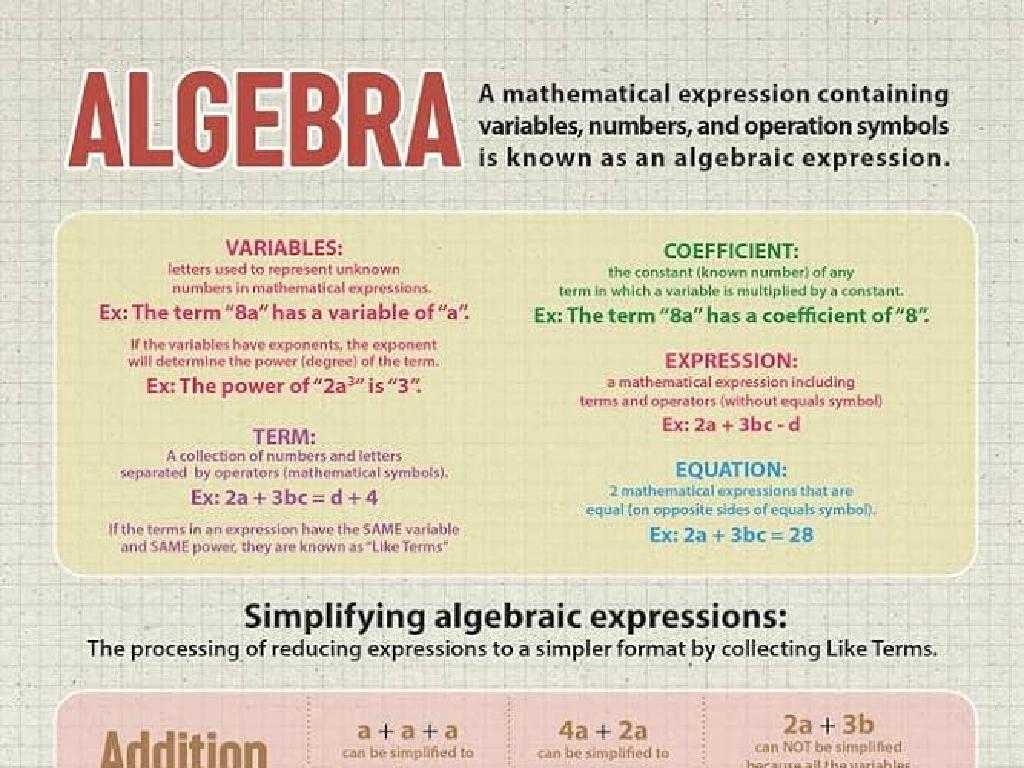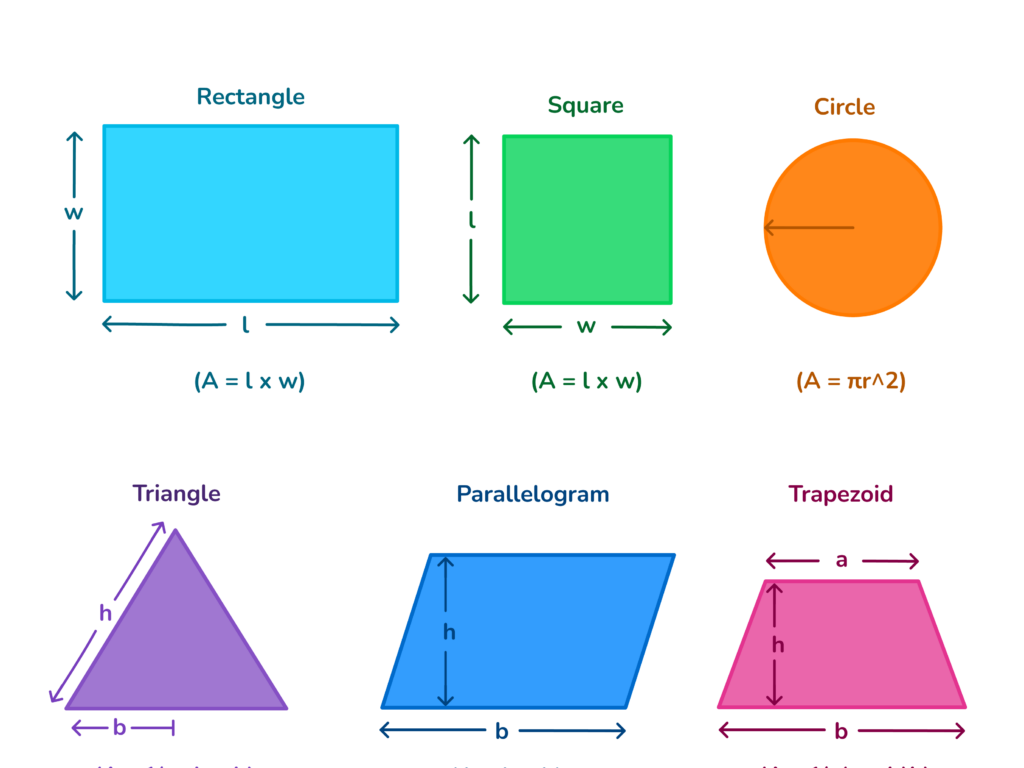Structure And Function: Carbohydrates, Lipids, Proteins, And Nucleic Acids
Subject: Science
Grade: Sixth grade
Topic: Biochemistry
Please LOG IN to download the presentation. Access is available to registered users only.
View More Content
Introduction to Biochemistry
– What is Biochemistry?
– The study of chemical processes in living organisms
– Exploring life’s chemistry
– How elements like carbon, hydrogen, and oxygen form life
– Overview of biomolecules
– Carbohydrates, lipids, proteins, nucleic acids are life’s building blocks
– Importance of each molecule
– Each plays a unique role in growth, energy, and heredity
|
This slide introduces the fascinating world of biochemistry to sixth-grade students. Biochemistry is the branch of science that explores the chemical processes within and related to living organisms. It’s a field that combines biology with chemistry to understand how life functions at a molecular level. Students will learn about the four major types of biomolecules: carbohydrates, which provide energy; lipids, which form cell membranes; proteins, which do much of the work in cells; and nucleic acids, which store and transmit genetic information. Emphasize the importance of these molecules in everyday life and their relevance to the students’ understanding of how their bodies work. This overview sets the stage for more detailed discussions on each type of biomolecule in subsequent lessons.
Exploring Carbohydrates
– What are Carbohydrates?
– Organic compounds made of carbon, hydrogen, and oxygen.
– Carbohydrates’ role in our body
– Provide energy, store energy, and maintain structure.
– Simple vs. Complex Carbohydrates
– Simple carbs are sugars, complex are starches and fibers.
– Carbohydrate-rich foods
– Fruits, bread, pasta, and cereals are good sources.
|
Carbohydrates are essential biomolecules that serve as the body’s primary source of energy. They are made up of sugar molecules, which are composed of carbon, hydrogen, and oxygen. In the human body, carbohydrates play a crucial role in energy provision, energy storage, and structural functions. Simple carbohydrates, such as glucose, provide quick energy, while complex carbohydrates, like starches found in grains, provide sustained energy. It’s important for students to understand the difference between these two types and the role they play in nutrition. Examples of carbohydrate-rich foods will help students identify what they consume that provides them with energy. Encourage students to think about their diets and recognize sources of simple and complex carbohydrates.
Exploring Lipids in Biochemistry
– What are lipids?
– Lipids are organic compounds, insoluble in water.
– Lipids’ roles in organisms
– They form cell membranes, store energy, and act as signaling molecules.
– Types of lipids: fats, oils, waxes
– Fats are solid at room temp, oils are liquid, and waxes are protective coatings.
– Lipids as energy reserves
– Lipids store more energy than carbohydrates, providing long-term energy.
|
This slide introduces students to lipids, a crucial group of organic molecules in biochemistry. Lipids are not soluble in water and have various functions in living organisms, including forming the structure of cell membranes, storing energy, and serving as important signaling molecules. Students will learn about different types of lipids fats, which are typically solid at room temperature; oils, which are liquid; and waxes, which often serve as protective coatings. Emphasize the role of lipids in storing energy, as they provide a more concentrated energy source than carbohydrates, making them vital for long-term energy needs. Encourage students to think of examples of each type of lipid in their daily lives and how these lipids contribute to the functioning of their bodies.
Proteins: Essential for Our Bodies
– Proteins as life’s building blocks
– Proteins form structures like muscles and also speed up chemical reactions.
– Proteins made from amino acids
– Amino acids link together to form proteins, like beads on a string.
– Enzymes: Special proteins
– Enzymes are proteins that help our body’s chemical reactions occur faster.
– Everyday foods rich in proteins
– Common protein sources: meat, beans, nuts, and dairy products.
|
This slide introduces proteins as fundamental components of living organisms, emphasizing their role in building and maintaining body structures, and in facilitating biochemical reactions as enzymes. Students will learn that proteins are made of smaller units called amino acids, which are like the ‘alphabet’ of proteins. Highlight the importance of enzymes, which are proteins that act as catalysts in our bodies. Discuss daily dietary sources of proteins, ensuring to include a variety of foods to cater to different diets. Encourage students to think about their meals and identify protein-rich foods they consume. This will help them understand the practical importance of proteins in their daily lives.
Nucleic Acids: DNA and RNA
– DNA & RNA: Life’s Blueprint
– DNA stores genetic info; RNA transfers it.
– Decoding the Genetic Code
– DNA sequences determine traits.
– RNA’s Role in Protein Synthesis
– RNA uses DNA’s code to make proteins.
– Nucleic Acids & Heredity
– DNA and RNA pass traits to offspring.
|
This slide introduces students to the complex world of nucleic acids, focusing on DNA and RNA, the molecules responsible for storing and transferring genetic information. DNA holds the instructions for building an organism and determining its traits, while RNA translates these instructions to synthesize proteins, the building blocks of life. Emphasize the importance of these molecules in heredity, as they are the means by which genetic information is passed from parents to offspring. Use relatable analogies, such as DNA being like a recipe book and RNA like a chef, to help students grasp these abstract concepts. Encourage questions to ensure understanding.
Class Activity: Building Biomolecules
– Construct biomolecule models
– Follow activity instructions
– Gather molecule kits or household items
– Items like marshmallows, toothpicks, candies can represent atoms
– Collaborate in groups
– Each group makes one type of biomolecule
|
This hands-on activity is designed to help students understand the structure of different biomolecules by building physical models. Provide clear instructions on how to use the molecule kits or household items to represent atoms and bonds. Encourage teamwork as students work in groups to create models of carbohydrates, lipids, proteins, and nucleic acids. Each group can focus on one biomolecule, ensuring they understand the unique structure and function. After the activity, have each group present their model and explain what they learned about the biomolecule they built. Possible variations of the activity could include using different colored items to represent different elements, comparing and contrasting the structures of the different biomolecules, or even creating a gallery walk where students can observe and discuss each other’s models.
Biochemistry Wrap-Up: Importance & Discussion
– Recap biochemistry fundamentals
– Biomolecules in daily life
– Carbs for energy, proteins for growth, lipids store energy, nucleic acids hold genetic info
– Encourage student questions
– What questions do you have about biomolecules?
– Facilitate class discussion
– Let’s discuss how these molecules affect our health and environment
|
This slide aims to summarize the key points of the biochemistry unit, emphasizing the role of carbohydrates, lipids, proteins, and nucleic acids in everyday life. Highlight how these biomolecules are essential for various bodily functions such as providing energy, supporting growth, storing energy, and carrying genetic information. Encourage students to ask any questions they have about the material covered, fostering an environment of curiosity and learning. Use this opportunity to assess student understanding and clarify any misconceptions. Facilitate a discussion on the practical implications of biochemistry in health, nutrition, and the ecosystem, helping students connect the concepts to real-world contexts.






